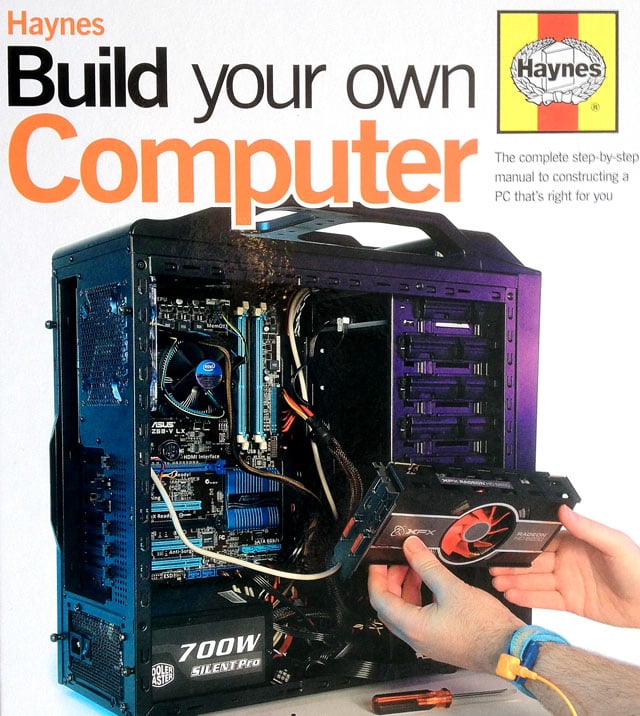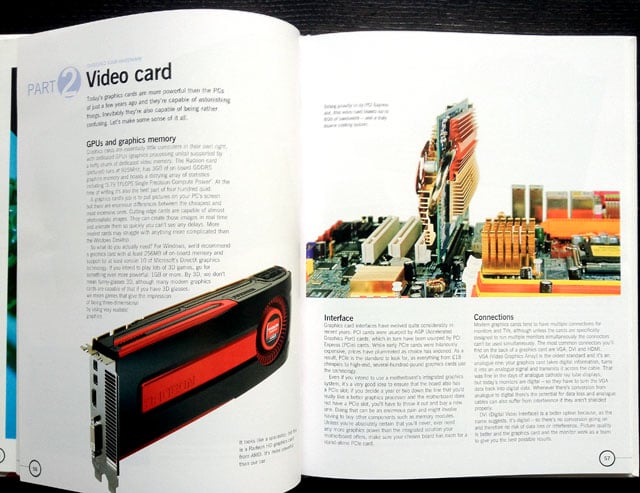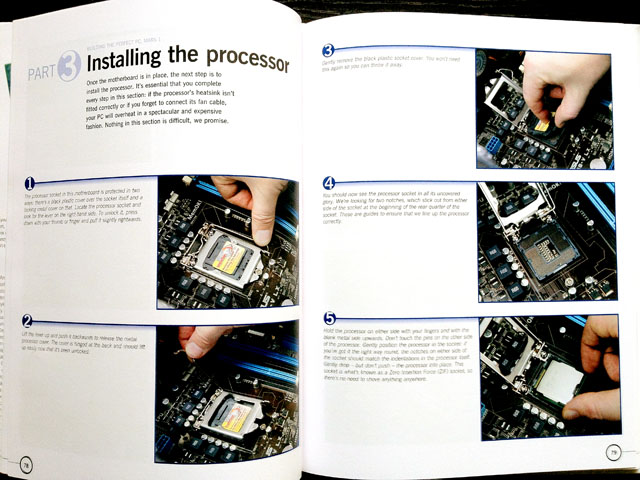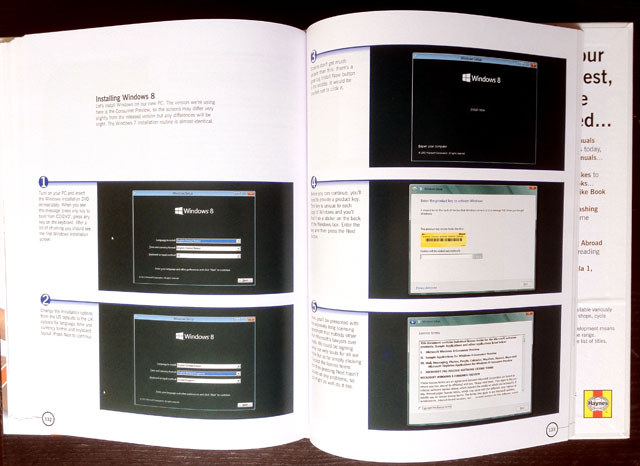Original URL: https://www.theregister.com/2012/09/12/review_haynes_build_your_own_computer_manual/
Haynes Build Your Own Computer book review
Manual upgrade
Posted in Personal Tech, 12th September 2012 11:21 GMT
As a journalist, engineer and car nut enthusiast, I can easily find myself spending hours upon hours poring over technical documents and workshop manuals, among them tomes published by Haynes. This time, however, I’m looking at something less mechanical and more digital: the latest in Haynes’ Build Your Own Computer series, written by Kyle MacRae and Gary Marshall.

Practical electronics: tech know-how made easy
The first thing that is immediately obvious when you open up the 5th edition of Build Your Own Computer is that – unlike your typical Haynes manual with its very informative, but entirely dry and bland writing style – MacRae and Marshall have a literary approach that is at least semi-conductive and will keep you flowing through the pages.
The second thing you notice – as you flip back to the publisher’s information to be sure that you are actually reading a Haynes book – is that the inside title page depicts scenes of great horror no new PC builder should ever see; in this case, an open hard disk with its platters exposed to the world. Surely, this is not something to show a novice?

Graphic detail
Back to the actual content though and reading the first chapter on “Choosing the Perfect PC” reveals this book is not written to expand upon the existing knowledge of an experienced PC builder – it really does break everything down to the basics. Fortunately though, even reading it from a position of experience, I did not feel patronised. In fact, I actually rather enjoyed the sections which discuss the evolution of modern computing technologies.
There is a phenomenal amount of information crammed into the 162 pages of this book, which covers everything from which websites to look at for further reference and trusted vendors – who may well have paid to be included, but are, by popular opinion, excellent choices as well – to detailed illustrated instructions on the actual building of two different PCs. This edition walks you through choosing the hardware for both an Intel-based workstation and an AMD-based HTPC.

Processing information
Once you’ve bought the hardware and built the machine(s) there are also guides for connecting your peripherals and installing the necessary software. Sorry *nix folks, only Windows is covered though. Finally, there’s a short guide on free software and even an appendix on BIOS beeps and error codes.
Legacy issues
You might be expecting a load of product placements and components chosen by corporate endorsement, however, I wholeheartedly approve of the choices made by MacRae and Marshall, seeing as their Intel system shares remarkable similarities with my recent build.

Up to the minute instructions: Windows 8 is covered too
My one and only particular gripe with this book is the way in which older technologies are discussed in the technical examples before they are introduced in a historical context. For instance, PCI-e is explained to be the de-facto standard for graphics interfaces, but a few pages on AGP is introduced in an example dealing with bus speeds. Only after the concept of bus speeds and multipliers has been covered, is it clarified that AGP is an old technology that has now been superseded.
This is the problem with writing books on ever changing technology, not all of the examples get properly updated in every edition. However, by the time you’ve finished reading I’m pretty sure even this wouldn’t cause much of a setback. Bear in mind though, that the reference to AGP and PCI GPU pairing for multi-monitor support on page 58 is seriously out-dated and needs to be revised. In fact these points are the only things holding me back from giving the book top marks.
Verdict

The real question that must be asked about this book is; can you justify spending the £22 RRP on information that could be found for free on-line? As far as I’m concerned, this is a very concise source of information that could be a valuable learning tool for those who find most such information too technical. For the technically-minded parent, who wishes to embark on a PC building project with their offspring, it's an ideal reference that you don't even need to power up to get started with. ®
More Computing Reviews |
||||
 Raspberry Pi Raspberry Pi
ARM PC |
 AMD and Intel AMD and Intel
extreme desktop CPUs |
 AMD and Nvidia AMD and Nvidia
extreme GPUs |
 Intel Ivy Bridge Intel Ivy Bridge
Core i7-3770K quad-core CPU |
 Best and the Rest: Best and the Rest:
ARM Mini PCs |